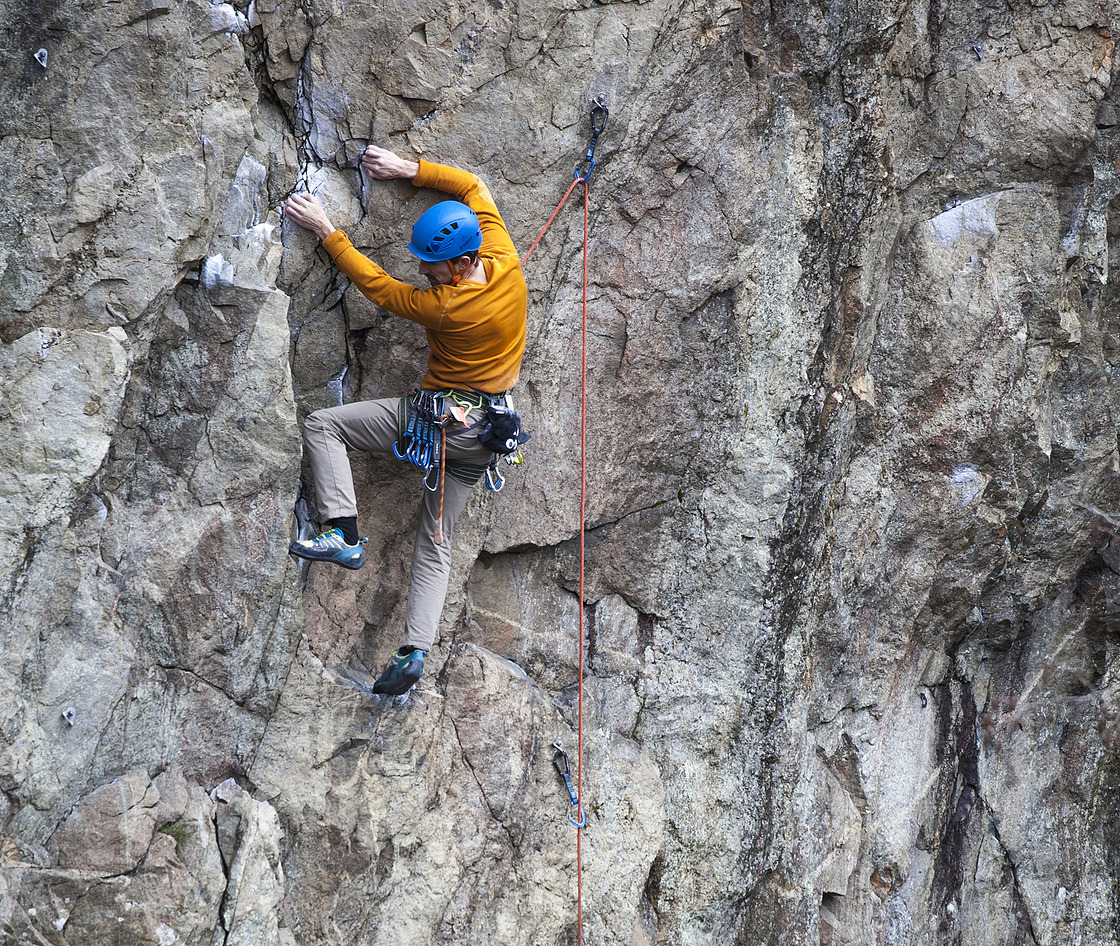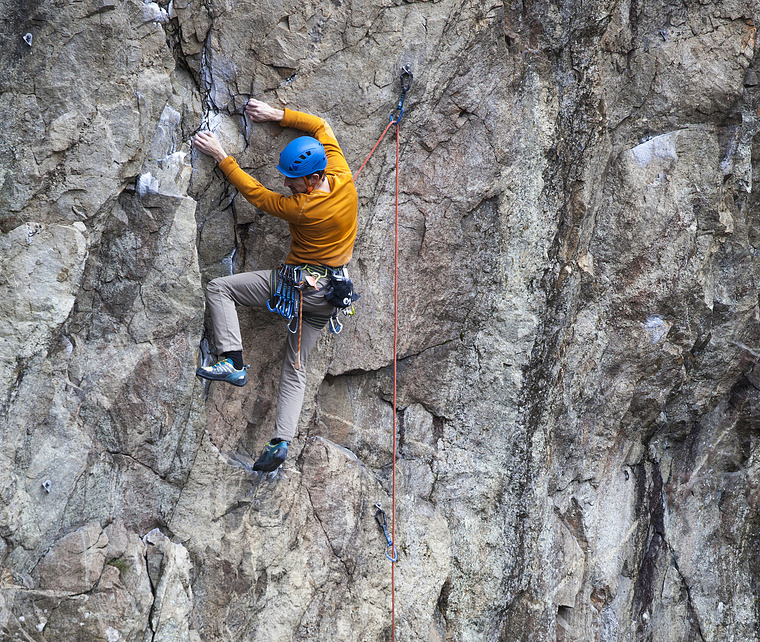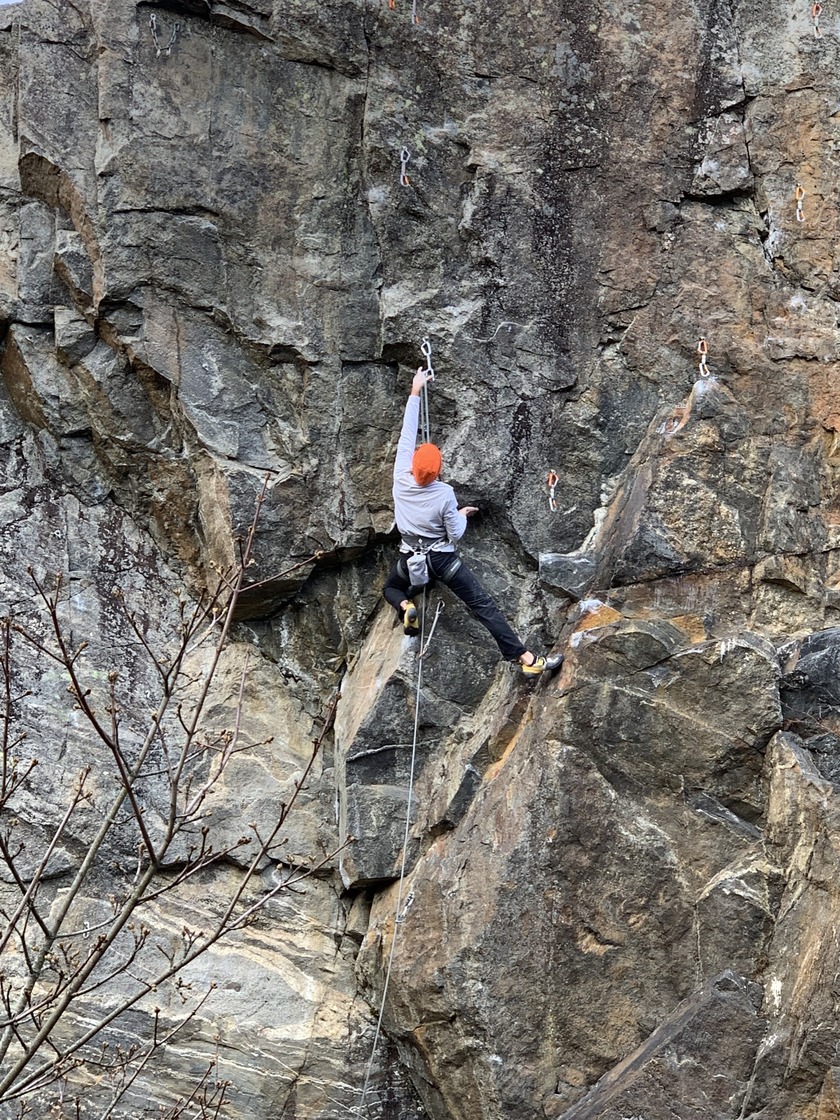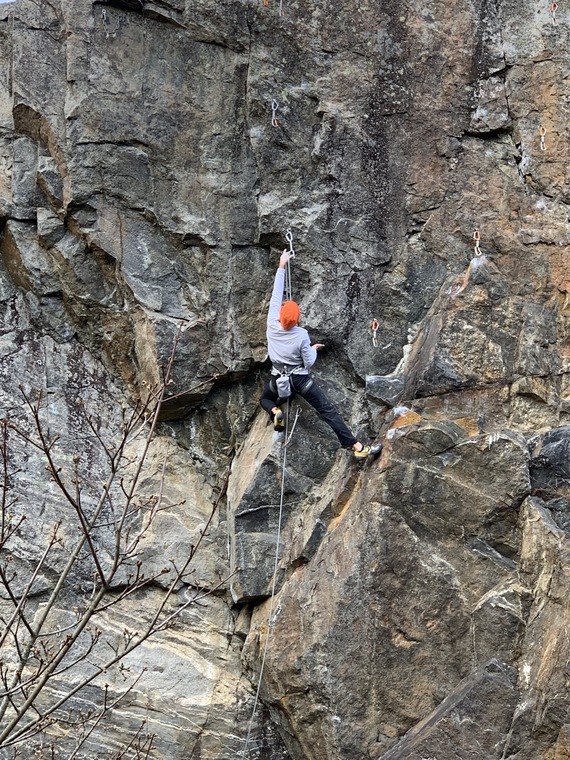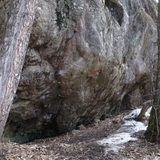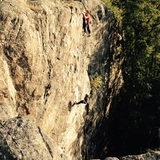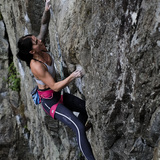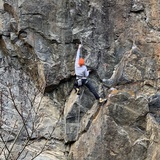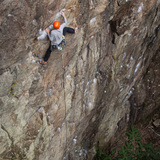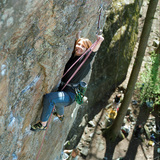An impressive and slightly overhanging 30-meter high wall where some of Stockholm's best routes in the grade range 6c to 7c are located.
The climbing is generally sustained and pumpy, technical and with mostly quite good crimps in different sizes. Most of the routes are fully bolted these days but occasionally some bolts can be a bit spread. The most popular wall is the Right Wall where there are a couple of classics that are among the very best in Stockholm. The Left Wall is more varied and some parts of it is divided by ledges, but there are some really cool routes on that wall as well.
The crag is situated in a little forest at Gustavsberg 20 km east of Stockholm and is surrounded by huge boulders giving the place an enclosed and cave-like character. You don't see the wall until you have walked into this "cathedral" and have the big wall in front of you. In the middle of the "cave" there is a large fireplace with benches where many people can sit.
The wall is west-facing and in summer when the sun is high most of the wall catches the sun. In spring and autumn, the big boulders can block the sun on the lower parts of the wall.
The quality of the rock is generally ok but some parts can be a little loose.
The wall dries quite quickly but because of its location, the soil can stay moist for quite a long time after heavy rainfall or snow melting in spring. It can be a lot of mosquitoes here.
The walk from parking is easy and takes only 8 minutes. The base of the cliff is mostly flat and child-friendly. The site has been protected as a natural monument since 1960 and is also a popular excursion destination by other than just climbers.
